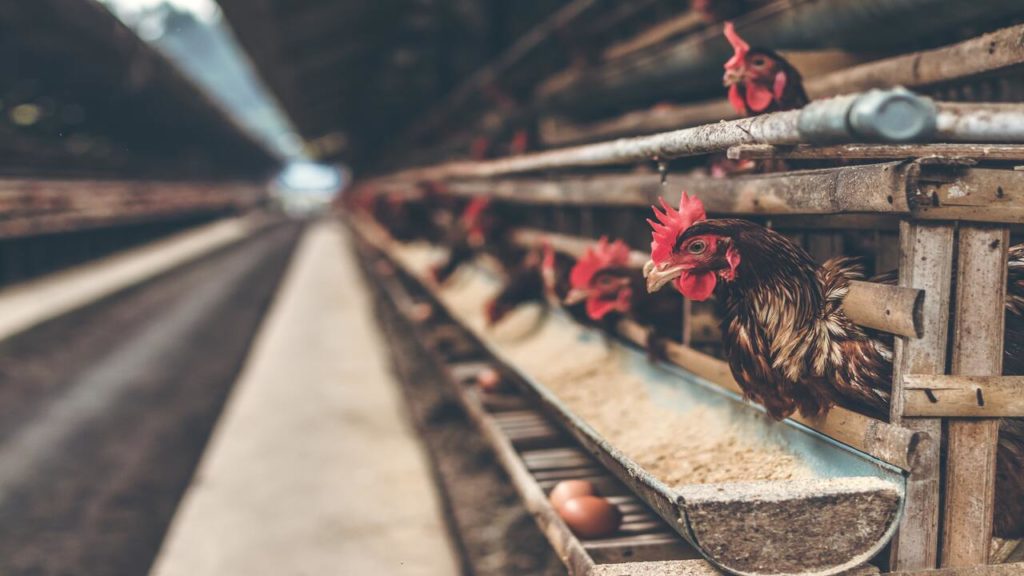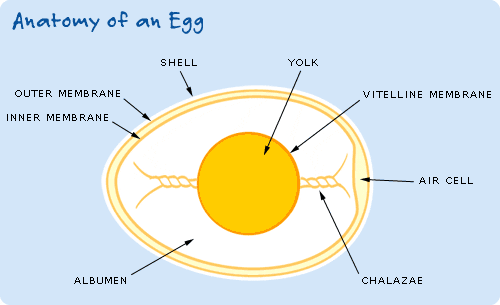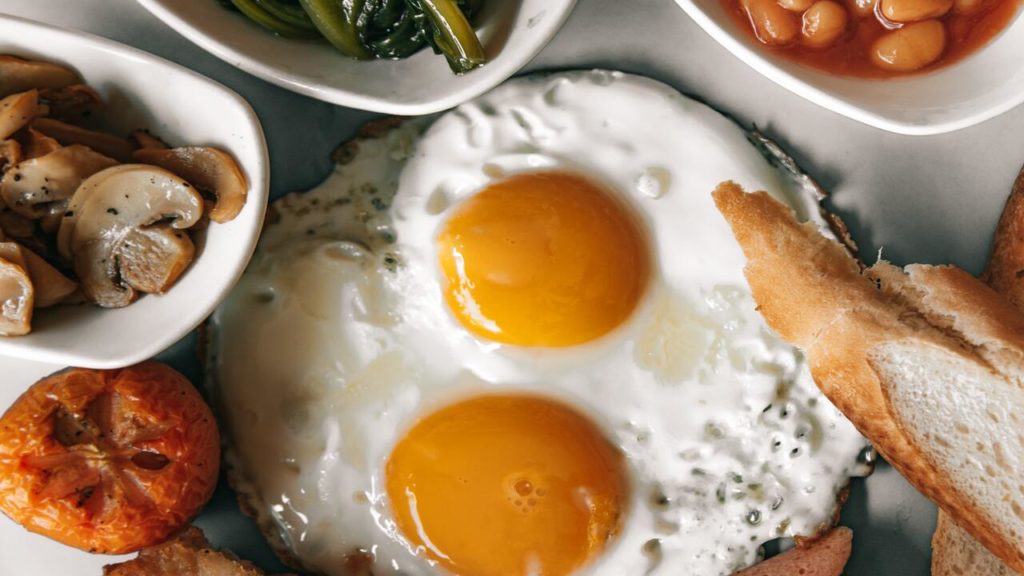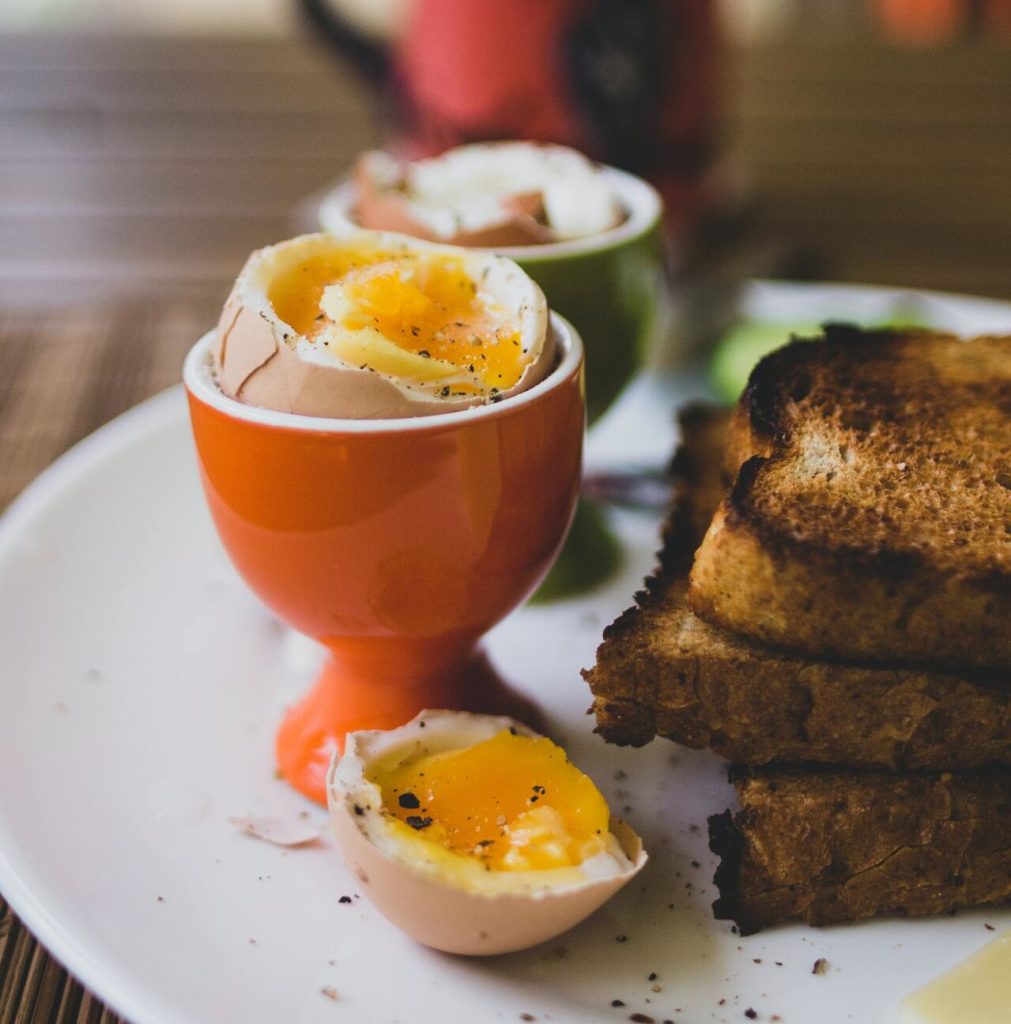Eggs are a true marvel of nature, available in a stunning array of colors from natural white to light brown. Their streamlined shape appears meticulously crafted to enhance their functionality. Beneath this aesthetic simplicity lies a complexity that makes them one of the most versatile and widely embraced foods globally.
They grace every table, from the elegant settings of Michelin-starred restaurants, where they are prepared with exquisite culinary techniques, to the cozy home-cooked meals enjoyed with love at breakfast, lunch, and dinner. The adaptability of eggs is extraordinary; they can be boiled, fried, scrambled, baked, or incorporated as a vital ingredient in countless recipes, from cakes and pies to sauces and main dishes.
However, before we crack them open and add them to our meals, it is essential to understand what we are truly putting in our frying pans. This includes knowing the origins of the eggs and how farmers raise their laying hens, ensuring they are treated with care and provided with appropriate living conditions.
Additionally, we must consider the nutritional benefits of eggs, which are rich in essential proteins, vitamins, and minerals, playing a significant role in a balanced diet. To fully enjoy these advantages, it is crucial to handle and consume them safely, preventing contamination and ensuring proper preparation. Thus, as we savor this common yet special delicacy, we should always prioritize conscious and informed consumption, appreciating not only the flavor but also the quality and source of the food we bring to our tables.
It may be the cock that crows, but it is the hen that lays the eggs.
-Margaret thatcher – Britain’s prime minister
Jump To Section
- The Eggs Universe
- What is an Egg, Exactly?
- The Egg Anatomy
- Egg Sizes And Weights
- Egg Grades
- Which Eggs Are Considered The Best?
- Health Benefits of Eggs
- Egg Safety
- Different Ways To Cook Eggs
- Eggs: Facts & Curiosities
The Eggs Universe

When we purchase eggs, we typically expect them to come from chickens, birds that have long been associated with egg production. However, it’s essential to acknowledge that other birds, such as geese, ducks, quail, and even ostriches, also contribute significantly to our culinary diversity. The preference for chicken eggs can be traced back to around 6000 BC in Thailand, where hens were favored for their prolific egg-laying abilities, establishing a tradition that persists today.
Over the centuries, particularly in the 20th century, the demand for food surged, allowing egg producers to capitalize on this growing need. To satisfy this demand, many turned to intensive confinement systems, where laying hens are kept in small, overcrowded cages for most of their lives, severely limiting their ability to move or engage in natural behaviors.
These conventional or battery cage systems rank among the most restrictive environments for animals in agribusiness, causing significant suffering as hens are deprived of essential behaviors like nesting, perching, and dust bathing—activities they would naturally perform in a more open setting. Fortunately, there is a rising awareness among consumers regarding the conditions in which these birds are raised. More people are now seeking alternatives, such as organic and free-range eggs, which do not involve the use of confined laying hens.
This shift in consumer preferences has prompted regulators to take action, with the European Union and the United States considering and, in some cases, implementing regulations to phase out intensive confinement systems. This evolution in the market not only reflects changing consumer expectations but also marks a crucial step toward more ethical and sustainable food production practices.
What Is An Egg Exactly?

The age-old question, “Which came first, the chicken or the egg?” has intrigued humanity for centuries, serving as both a philosophical and scientific conundrum that sparks intense debate and deep contemplation. This inquiry transcends mere curiosity; it delves into essential themes surrounding the origins of life and species evolution.
According to Harold McGee, the esteemed author of “On Food and Cooking: The Science and Lore of the Kitchen,” the answer may be more straightforward than it appears: “Eggs existed long before chickens.” This assertion takes us back approximately 250 million years, to a time when reptiles began to evolve a self-contained egg with a hard, leathery shell. This evolutionary breakthrough was vital, enabling eggs to be laid in terrestrial environments without the peril of dehydration, a significant reproductive challenge on dry land.
Around 100 million years after the emergence of the first eggs, birds appeared, introducing an even more advanced version of this reproductive strategy. Consequently, we can deduce that eggs, as a reproductive form, predate modern birds by millions of years. The domestic chicken, Gallus domesticus, a staple of contemporary poultry farming, has a relatively recent domestication history of about 4,000 to 5,000 years.
An egg, typically weighing around 56 grams, is one of the most nutritionally complete foods available. It can be fertilized or not, depending on the presence of a rooster. Notably, a hen is born with a full set of eggs, and throughout her life, she will produce many, regardless of whether a male is present. This indicates that while a rooster is essential for fertilization and the subsequent hatching of a chick, the production of eggs itself is independent of him.
Within a hen’s body lie thousands of tiny undeveloped yolks in her ovaries. As these yolks mature, they embark on an extraordinary developmental journey. The ovulation process takes about 25 hours, during which the yolk develops, is enveloped in albumen, encased in a protective membrane, and finally acquires a hard shell.
After ovulation, the hen quickly begins the cycle anew, ready to release another egg in about 30 minutes. Additionally, the color of the eggs, ranging from white to brown, is determined by the hen’s breed and is unrelated to her feather color. Interestingly, all eggs, regardless of shell color, possess similar nutritional values. The yolk color can vary from pale yellow to deep orange, influenced by the hen’s diet; orange yolks indicate a diet rich in carotenoids, while lighter yolks typically result from a wheat-based diet.
Thus, when we ponder the timeless chicken-and-egg question, we are invited to explore not only the evolution of species but also the intricate and beautiful biological processes that yield one of our most nutritious and versatile foods. What may seem like a simple question is, in fact, a gateway to appreciating the complexity of life in all its forms.
The Egg Anatomy

When we crack an egg, we typically expect to see only the yolk and the white. These two components are the most familiar: the yolk, a yellowish and nutritious orb, and the white, or albumin, which is transparent but turns opaque when cooked.
However, other vital parts of the egg often go unnoticed, each playing a crucial role in its structure and function. For instance, the shell, the outer protective layer, is primarily made of calcium carbonate and acts as a barrier against bacteria and contaminants. Additionally, the egg contains internal membranes that safeguard the yolk and white while providing structural support. Known as vitelline membranes, these layers are essential for maintaining the egg’s integrity and freshness.
Thus, when we crack an egg, it’s fascinating to consider the complexity and significance of all its components, beyond just the familiar yolk and white. Let’s delve deeper into each of these elements.
Shell
The eggshell serves as the hard outer layer that encases the egg’s internal contents, distinguished by its unique grainy texture. Composed primarily of calcium carbonate (CaCO3), this mineral imparts rigidity and strength to the shell. Additionally, the eggshell features thousands of tiny pores crucial for gas exchange, allowing air and moisture to permeate. This exchange is vital for the developing embryo’s respiration if the egg is fertilized.
The porous nature of the shell also explains why eggs can absorb odors from their surroundings, particularly in the refrigerator. When stored near strongly scented foods, the molecules from these odors can infiltrate the shell’s pores, potentially altering the egg’s flavor when cooked or consumed. To maintain their original freshness and taste, it is advisable to store eggs in closed containers or in areas of the refrigerator away from pungent foods.
Moreover, the eggshell acts as a protective barrier, safeguarding the internal contents from contamination and physical impacts, thereby helping to preserve the egg’s quality for an extended period.
Inner and Outer Membranes
Nestled between the eggshell and the egg white, the internal and external protein membranes serve a vital role in safeguarding the egg’s contents, creating an effective defense system against microbial invasion.
These membranes function as physical barriers, hindering bacteria and other pathogens from penetrating the egg and jeopardizing the health of the developing embryo. Beyond their protective capabilities, these membranes also harbor antimicrobial substances that neutralize potential threats, ensuring a secure environment for the future organism’s development.
Consequently, the unique properties of these membranes are integral to the egg’s natural defense strategy, enhancing its viability and protection against infections.
Vitelline membrane
The vitelline membrane is a vital biological structure that serves to protect and encase the yolk, the nutrient-rich component of the ovum in various organisms, particularly in the eggs of birds and reptiles. This membrane functions as a protective barrier, shielding the yolk from external threats such as bacteria and contaminants, while also preserving the integrity of its nutritional content.
Additionally, the vitelline membrane may facilitate the exchange of substances between the yolk and its surroundings, which is essential for the embryo’s early development. Thus, the vitelline membrane not only safeguards the yolk but also plays a critical role in supporting embryonic growth.
Air cell
Have you ever observed a crater forming at the base of a boiled egg? This intriguing feature is known as an air chamber. During the egg production process, the internal components, including the white and yolk, contract as the egg cools. This contraction creates a space between the inner and outer membranes, resulting in the formation of the air chamber.
This chamber is crucial for preserving the egg, as it helps maintain the freshness and quality of its contents. Additionally, the presence of this air chamber can affect how the egg cooks and even its shelf life. So, the next time you boil an egg and notice this crater, remember that it is a fascinating reflection of the natural process of egg formation and the subtle ways biology reveals itself.
Chalaza
The chalazae are a remarkable and vital structure found within the egg, consisting of two twisted membranous bands that play a key role in preserving the egg’s integrity. These bands anchor the yolk, the egg’s nutritious component, to the shell’s edges, ensuring that the yolk remains centered and stable.
This configuration not only safeguards the yolk but also helps maintain the egg’s quality over time. Typically opaque in color, prominent chalazae cords serve as a crucial indicator of an egg’s freshness.
A fresh egg will exhibit well-defined and visible chalazae, suggesting that the yolk is optimally positioned and that the egg has been stored correctly. As the egg ages, the chalazae may weaken and become less distinct, causing the yolk to shift from its central position. Thus, robust chalazae not only signify freshness but also reflect the egg’s overall quality, indicating the health of the bird that laid it and the conditions under which it was kept.
Yolk
The color of an egg yolk can vary widely, ranging from pale yellow to deep orange, influenced by several factors, particularly the hen’s diet. Unlike the egg white, the yolk has a lower water content and a higher concentration of protein, making it a valuable nutritional component. It is also abundant in essential vitamins, such as vitamin A, which supports eye health and boosts the immune system, and vitamin D, crucial for calcium absorption and bone health.
Additionally, the yolk provides important minerals like phosphorus and calcium, vital for the development and maintenance of strong bones and teeth. Other nutrients present in the yolk include thiamine and riboflavin, B vitamins that are key to energy metabolism and cellular function. Thus, the egg yolk is not only a delicious and versatile ingredient in cooking but also a highly nutritious food that can significantly enhance a balanced and healthy diet.
Egg white
Egg whites, scientifically referred to as albumen, derive their name from the Latin word “albus,” meaning “white.” This egg component is renowned for its high-quality protein content and substantial water content, making it a highly nutritious food choice. In addition to being an excellent protein source, egg whites are virtually devoid of fat and carbohydrates, appealing to those pursuing a healthy, balanced diet.
Their rich profile of essential amino acids makes them invaluable for muscle building and repair, often favored by athletes and fitness enthusiasts. Moreover, egg whites are incredibly versatile in the kitchen, lending themselves to a wide range of recipes—from omelets and soufflés to meringues and mousses—enhancing not only nutritional value but also the texture and lightness of various dishes.
Egg Sizes And Weights
When you encounter a recipe that specifies the addition of an egg, it’s essential to recognize that this typically refers to a standard-sized egg. In Brazil, the standard is a large egg, which averages around 56 grams.
This convention simplifies the cooking process by ensuring ingredient quantities are balanced, leading to the desired outcome. To provide a clearer understanding of this egg’s composition, we can break it down into its parts. The eggshell, which serves as the outer protective layer, weighs about 5 grams. The egg white, the liquid and transparent portion, constitutes the bulk of the egg’s weight at approximately 31 grams.
Lastly, the yolk, the nutrient-rich yellow part, weighs around 20 grams. Thus, when a recipe calls for an egg, it generally means a large egg with these specific proportions, unless stated otherwise. This standardization is particularly beneficial in recipes requiring precision, such as cakes and desserts, where the balance of liquid and fat can significantly influence the texture and flavor of the final product.
The US Department of Agriculture established parameters for egg weight.
| Size | Weight per dozen | Weight per egg |
| Jumbo | 30 oz / 850 g | 2.5 oz / 70 g |
| Extra Large | 27 oz / 765 g | 2.3 oz / 65 g |
| Large | 24 oz / 680 g | 2.0 oz / 56 g |
| Medium | 21 oz / 595 g | 1.8 oz / 50 g |
| Small | 18 oz / 510 g | 1.5 oz / 45 g |
| Peewee | 15oz / 425g | 1.25 oz / 35 g |
Egg Grades
The quality of an egg’s interior, its appearance, and the condition of its shell are key factors in determining its grade, which is essential for evaluating freshness and suitability for consumption. In the United States, egg grading is categorized into three main classes: AA, A, and B. The AA grade signifies the highest quality, featuring a thick, well-defined white, a firm yolk, and a clean, uncracked shell. The A grade also indicates good quality but may have a slightly thinner white and a yolk that is less firm than that of AA eggs. The B grade is assigned to eggs that fall short of the higher standards, often exhibiting a thinner white and a less appealing overall appearance.
In Canada, the grading system is more detailed, encompassing four categories: Canada A, B, C, and Canada Nest Run. Canada A eggs are of high quality, akin to the US AA grade, while B-grade eggs are of lower quality but still safe for consumption. Category C includes eggs that do not meet the standards of the higher grades and may show visible defects. Conversely, Canada Nest Run eggs are collected directly from hens raised in more natural environments, without the stringent classification of the other categories.
In Brazil, eggs are classified into three classes: A, B, and C. Class A eggs are deemed the highest quality, similar to the US AA category, with intact shells and fresh contents. Class B includes eggs that, while still edible, may have minor imperfections or slightly reduced quality. Class C consists of eggs that do not meet the standards of the higher classes and may exhibit more noticeable defects; these are typically used for industrial processing or in products that do not require whole eggs to be visually appealing. These classifications are vital for ensuring food safety and consumer satisfaction, empowering buyers to make informed decisions based on the quality of the eggs they purchase.
While countries may use different classifications for eggs, they adhere to similar rigorous standards to assess product quality. The external quality is one of the first aspects evaluated, requiring that the shell be clean, smooth, and free from cracks or deformities that could compromise the egg’s integrity. These factors are vital, as the external appearance not only affects consumer acceptance but also serves as an indicator of freshness and safety.
Additionally, the quality of the yolk plays a critical role in egg evaluation. It should be translucent, firm, and centered, with no signs of germ development, which would suggest the egg is no longer fresh. The egg white must also be clear, transparent, and consistent, with intact chalazae—structures that keep the yolk suspended in the center. These characteristics are essential for meeting market quality standards.
To assess the internal quality of eggs, a method known as candling is employed, which involves shining a light through the eggs. This technique helps identify any anomalies, such as blood spots, absence of yolk, thin shells, watery whites, or the presence of double yolks. Detecting these irregularities is crucial, as eggs failing to meet quality standards are promptly removed from the batch, ensuring that only products that fulfill all criteria reach consumers. Thus, both the external and internal quality of eggs undergo thorough evaluation to guarantee safety and satisfaction for the end consumer.
Which Eggs Are Considered The Best?

The market offers a wide variety of eggs, including free-range, conventional, organic, omega-3 enriched, and more. This array can complicate the decision-making process for consumers who want to understand the distinctions among these categories. Each type of egg possesses unique characteristics that can affect flavor, nutritional value, and environmental impact.
Free-range eggs are the most common and typically more affordable, but their production conditions may not always prioritize the welfare of the hens. In contrast, organic eggs come from hens raised under sustainable agricultural practices, free from pesticides and chemical fertilizers, and fed organic feed. Omega-3 enriched eggs are sourced from hens on a specialized diet rich in this beneficial fatty acid, promoting a healthier diet.
Free-range eggs, specifically, are produced by hens that roam in environments that allow for a more natural lifestyle, which can enhance the quality of the eggs. Despite the differences among these options, it’s important to note that all types of eggs provide satisfactory nutritional benefits. They are excellent sources of protein, vitamins, and minerals, making significant contributions to a balanced diet.
When choosing which type of egg to purchase, consumers should consider not only price and convenience but also the production practices and nutritional advantages each option offers.
Standard
Many producers raise laying hens in conventional “battery” cages, which are characterized by their small and overcrowded conditions. In these environments, the hens are confined to tight spaces where they have equal access to food and water, but they are deprived of essential features that are crucial for their well-being. Specifically, these cages do not provide access to nests or perch areas, which are important for the hens’ natural behaviors.
As a result, the hens are unable to engage in instinctive activities such as scratching the ground with their toes to search for seeds or insects, behaviors that are vital for their physical and psychological health. This lack of opportunity to express natural behaviors can lead to stress, frustration, and a range of health issues.
The confinement in battery cages not only limits their movement but also restricts their ability to socialize and establish a natural pecking order, further impacting their overall quality of life. In essence, while these systems may be designed for efficiency in egg production, they fail to consider the fundamental needs of the hens, raising significant ethical concerns about animal welfare in the poultry industry.
Organic
Organic eggs are produced by hens raised in environments that prioritize both animal welfare and environmental sustainability. These hens are exclusively fed certified organic grains, ensuring their diet is free from synthetic pesticides, chemical fertilizers, and genetically modified organisms. Additionally, they are not administered growth hormones or antibiotics, guaranteeing that the eggs remain free from harmful chemicals.
This method not only enhances the quality of the eggs but also supports safe and responsible farming practices, demonstrating a commitment to consumer health and ecological preservation. By choosing organic eggs, you are selecting a product that honors both the well-being of animals and the integrity of nature.
Omega-3
Omega-3 eggs are produced by hens that are fed a specially formulated diet containing a substantial amount of flaxseed, typically between 10% and 20%. This inclusion is vital, as flaxseed is a rich source of polyunsaturated fatty acids, particularly alpha-linolenic acid (ALA), a type of omega-3 fatty acid.
The presence of these fatty acids in the hens’ diet not only enhances the nutritional profile of the eggs but also offers significant health benefits for humans. Research indicates that regularly consuming omega-3 eggs can lower the risk of heart disease. This is largely due to the role of polyunsaturated fatty acids, like those in flaxseed, in supporting cardiovascular health. They help decrease LDL cholesterol levels (the “bad” cholesterol), promote arterial health, and may assist in regulating blood pressure.
Furthermore, these fatty acids possess anti-inflammatory properties that can benefit the cardiovascular system in various ways. By choosing omega-3 eggs, consumers make a healthier dietary choice while also supporting their long-term health by incorporating a natural source of beneficial fatty acids into their meals. This simple practice can effectively enhance the nutritional quality of daily diets and encourage a healthier lifestyle.
Free-run
Free-run eggs, often referred to as cage-free eggs, come from hens raised in controlled environments, typically within spacious sheds designed for their comfort. Unlike hens confined in cage systems that severely restrict their movement and natural behaviors, free-run hens enjoy the liberty to roam freely within their living space.
These hens benefit from a more expansive environment, complete with access to nests for laying eggs in a natural and secure manner, as well as perches that cater to their instinctive need to rest and roost. This farming approach prioritizes the well-being of the hens, allowing them to engage in natural behaviors such as scratching, exploring, and socializing, which leads to a healthier and less stressful existence.
By choosing free-run eggs, consumers not only select a more ethical product but also endorse farming practices that emphasize animal welfare, reflecting a growing awareness of food production methods and the quality of life for the animals involved.
Free-range

Free-range eggs come from hens that are free to roam outside of cages, allowing them to move about and interact directly with the earth. This connection to their natural environment is vital for the hens’ well-being, enabling them to engage in instinctive behaviors like scratching, exploring, and sunbathing.
Consequently, the healthier and more natural lifestyle of these hens results in higher-quality eggs. Well-cared-for and well-fed hens produce eggs that reflect their superior treatment. Additionally, free-range eggs often feature more vibrant yolks and richer flavors, qualities that many consumers seek in healthier, sustainable options. By choosing free-range eggs, you not only enjoy a superior food product but also support farming practices that prioritize animal welfare and sustainability.
Health Benefits Of Eggs
In the 1950s, a significant breakthrough in health research emerged as experts began exploring the link between blood cholesterol levels and heart disease incidence. This investigation revealed that individuals with elevated cholesterol were at a higher risk of developing heart disease, raising serious concerns about dietary habits.
Consequently, researchers identified a connection between blood cholesterol and egg consumption, given that eggs are known to contain cholesterol. This finding prompted a dramatic shift in American eating patterns, with many people reducing or eliminating eggs from their diets in response to new health guidelines.
However, scientific advancements in recent decades have transformed our understanding of this relationship. New studies indicate that the body absorbs cholesterol from eggs far less than previously believed. This shift in perspective led the American Heart Association to update its recommendations, now suggesting that consuming one egg per day is not only acceptable but can also be part of a healthy diet.
We are probably more embracing of eggs within a heart-healthy dietary pattern than we were 20 years ago, but it’s still a source of dietary cholesterol. However, eating an egg a day as a part of a healthy diet for healthy individuals is a reasonable thing to do.
Jo Ann Carson, professor of clinical nutrition at UT Southwestern Medical Center in Dallas.

With just 78 calories each, eggs are a nutrient-dense source of protein and vitamins. A large egg provides about 6 grams of protein, making it an excellent choice for those looking to boost their protein intake in a delicious and convenient way.
Moreover, eggs are rich in essential nutrients, including vitamin D, which is vital for bone health and immune function, and choline, crucial for metabolism and liver health. Egg yolks often shunned due to their cholesterol content, also offer significant advantages for eye health. They are abundant in lutein and zeaxanthin, antioxidants linked to a lower risk of cataracts and macular degeneration, leading causes of blindness in individuals aged 55 and older.
For those aiming to cut back on fat, egg whites present a healthy alternative, containing about 4 grams of protein and being fat-free, making them an excellent option for a balanced and nutritious diet. Thus, when consumed in moderation, eggs can be a valuable addition to a healthy diet, enhancing overall health and well-being.
Egg Safety
Although eggs are usually clean when laid, they can sometimes be contaminated with Salmonella or other bacteria, causing food poisoning. That’s because the egg exits the hen’s body through the same passageway as feces is excreted.
Although bacteria are found, in most cases, in the shell itself, It is also possible for eggs to become infected by Salmonella fecal contamination through the shells’ pores after laying. This is not a problem for commercial eggs you buy at the grocery store because companies wash eggs before they reach the shelves.
The WHO estimates that nearly 600 million or 1 in 10 people fall ill due to food poisoning, and 420,000 die each year in the world. In the US, approximately 1.35 million people are infected with Salmonella annually. In these numbers are the main victims – the elderly and children under 5.
The Centers for Disease Control claims that most people who get sick from Salmonella have diarrhea, fever, and stomach cramps. Symptoms usually begin 6 hours to 6 days after infection and last 4 to 7 days. People with diarrhea should drink extra fluids.
Is it safe to eat raw or undercooked eggs?
No one should eat foods containing raw eggs or not thoroughly cooked, mainly children, the elderly, pregnant women, and people with weakened immune systems that are particularly vulnerable to Salmonella infections. A chronic illness weakens the immune system, making the person vulnerable to foodborne illnesses.
How can you reduce the risk of getting Salmonella?
When Shopping
- Choose only refrigerated eggs with clean and uncracked shells.
- Consider buying and using pasteurized egg products.
- Pick up eggs at the end of your shopping trip, so they stay cold.
Temperature Safe Zone
- Keep the eggs in the coldest section of the fridge.
- Do not keep them at room temperature for more than two hours.
- Hard-boiled eggs can be stored in a sealed container in the fridge for up to one week.
- Store eggs in the fridge at 4ºC with a relative humidity of 70% to 80%.
- Cook the eggs at an internal temperature of 74ºC for 15 seconds or longer.
- Eggs should be held for service at 60ºC for no more than two hours.
When Cooking
- Wash your hands thoroughly with warm water and soap for at least 20 seconds after handling eggs.
- Wash items that came into contact with raw eggs—including countertops, utensils, dishes, and cutting boards.
- Keep raw meat and poultry separate from produce and other foods when cooking, avoiding cross-contamination.
Different Ways To Cook Eggs
You can boil, scramble, make an omelet, fry, or poach them. Also, eggs are the protagonists of many recipes, including hollandaise sauce, crème brûlée, and muffins.
Check below the different ways to cook them:
Sunny side up

A sunny-side-up egg is a delightful breakfast staple cooked uniquely. In this technique, the egg is fried on only one side. This results in a beautifully runny yolk that remains raw and vibrant, while the egg whites are gently cooked to almost set.
The edges of the whites often develop a delicate, lightly crispy texture, adding a pleasing contrast to the soft, creamy yolk. The visual appeal of a sunny-side-up egg is enhanced by its glossy, golden yolk, which sits proudly atop the plate, inviting you to break into it and experience the rich, velvety goodness within.
This method of preparation not only highlights the egg’s natural flavors but also allows for various serving options, whether enjoyed on its own, atop a slice of toast, or as a complement to a hearty breakfast spread.
Boiled

When it comes to hard-boiled eggs, individual preferences for yolk texture and doneness can vary significantly. Some people enjoy a runny yolk that oozes when cut, while others prefer a firm, fully cooked yolk. Since it’s impossible to see through the eggshell to gauge the internal state, following a cooking guide is essential for achieving your desired outcome.
For those who favor a runny yolk—perfect for topping toast or enhancing salads—the ideal cooking time is about 3 to 4 minutes. This duration allows the egg white to set while keeping the yolk runny and creamy. If you prefer a soft yolk with a slightly firmer texture, aim for a cooking time of approximately 5 to 6 minutes. At this point, the white will be fully cooked, and the yolk will have a pleasant softness, making it great for mixing with other ingredients.
Conversely, if you like your eggs hard-boiled, where the yolk is completely firm and devoid of moisture, the recommended cooking time is 11 to 15 minutes. This ensures that both the white and yolk are thoroughly cooked, making them ideal for salads, sandwiches, or enjoying on their own.
Remember to start your timer as soon as the water begins to boil to ensure even cooking and achieve the desired results. With these guidelines, you can prepare hard-boiled eggs just the way you like them, maximizing the enjoyment of this delicious and versatile dish.
Omelets

One dish that may appear simple at first glance but can be surprisingly challenging to master is the omelet. To help you create the perfect omelet, follow these cooking tips closely. Begin by beating the eggs in a bowl with a whisk or fork until fully blended. Achieving a homogeneous mixture is crucial, as it contributes to a light and airy texture in the final dish.
Next, select a high-quality non-stick pan to facilitate the cooking process and prevent sticking. For stirring and handling the omelet, a silicone spatula is ideal; it won’t scratch the pan’s surface and allows for easy flipping. A key tip is to opt for clarified butter instead of regular butter. Clarified butter has a higher smoke point, enabling it to be heated to greater temperatures without burning, which enhances the flavor and gives your omelet a beautiful golden hue.
Now, it’s time to choose your toppings. The possibilities are endless—consider ingredients like ham, bacon, sausage, various cheeses, fresh spinach, vibrant peppers, and onions. Feel free to experiment and combine flavors that excite your palate.
Finally, remember to serve the omelet immediately after cooking. This ensures it retains its soft, flavorful texture, providing a delightful dining experience. Enjoy your delicious omelet and share it with friends and family!
Scrambled

Elevating your scrambled eggs for breakfast can transform this simple dish into a delightful delicacy. Begin by cooking the eggs gently over medium heat to ensure even cooking, which prevents burning or dryness.
A key tip is to add salt only after removing the eggs from the heat; this preserves their texture and flavor, avoiding an overly salty result during cooking. Instead of whisking the eggs beforehand, crack them directly into the pan. This method helps maintain the integrity of the yolks and whites, resulting in a richer, more flavorful scramble.
As the eggs cook, stir continuously with a spatula to achieve a fluffy, creamy consistency. It’s vital to take the pan off the heat as soon as the eggs start to set, as they will continue to cook with the residual heat. To enhance creaminess, consider adding a splash of cream or a pat of butter near the end of cooking.
These additions will not only create a velvety texture but also intensify the flavor, making your breakfast even more delicious and satisfying. With these techniques, you’ll enjoy scrambled eggs that are truly irresistible!
Poached

Poached eggs, a culinary delight, require a touch of technique and careful attention, but the results are undeniably rewarding. Their delicate nature is one of their most appealing traits, and achieving the perfect poached egg hinges on the cooking method. To create an ideal poached egg, it’s crucial to use low heat and slightly acidic water, which helps the egg whites coagulate evenly, resulting in a soft, velvety texture.
Start by selecting a medium-sized pan and filling it with cold water. Gradually bring the water to a gentle simmer, maintaining a temperature around 85ºC. This precise temperature is vital, as it prevents vigorous bubbling that could disrupt the egg. While the water heats, add a pinch of salt and a splash of white wine vinegar. The vinegar not only acidifies the water but also aids in setting the egg whites more quickly.
Once the water reaches the desired temperature, use a whisk to create a gentle whirlpool. This motion helps keep the egg white close to the yolk, resulting in a more compact shape. Carefully crack the egg into a small bowl, ensuring the yolk remains intact, and then gently pour it into the center of the whirlpool. Allow the egg to cook for about 4 minutes, adjusting the time based on your preferred yolk consistency. To check for doneness, lightly touch the egg white; it should feel firm, while the yolk remains soft. If the white isn’t fully set, let it cook for an additional 10 seconds, checking frequently.
After the cooking time is complete, use a slotted spoon to remove the poached egg from the water and place it on a plate lined with paper towels to absorb any excess moisture. For a polished presentation, you can trim the edges of the egg white with kitchen scissors to remove any stray bits. Poached eggs are best served immediately, showcasing their optimal texture and flavor. They can be enjoyed on their own, atop a slice of toast, or as part of a more elaborate dish like a salad or brunch spread. With a bit of practice, you’ll master the art of poaching eggs, adding a valuable skill to your culinary repertoire.
Eggs: Facts And Curiosities
- Break individual eggs into a small container before adding and mixing with other ingredients. Indeed, a bad egg can spoil the entire preparation.
- Boiled eggs can be stored in the refrigerator for up to two days. You can reheat them in simmering water on the stove for under a minute without overcooking them.
- Significantly fresh eggs do not peel well when hard-cooked. To peel easily, tap the shell on a cutting board and gently roll until cracks have formed.
- To check the freshness of the eggs, submerge them in a pot with cold water. If it sinks, it is fresh; if it floats, it is likely not.
- Fresher eggs work best for boiling, poaching, or frying, while older eggs can be accepted in baking and for whipping the whites into meringues.
- Blood spots are simply blood vessels that can be easily removed and are harmless to eat if left on.
- Beaten egg whites provide volume by trapping air.
- Hard-cooked eggs spoil faster than fresh eggs because when are cooked, the protective coating is removed, leaving bare pores in the shell for bacteria to enter and contaminate it.
- There is no nutritional difference between fertilized eggs and infertile eggs. Most eggs sold today are infertile. If the eggs are fertile and cell growth is detected, they are removed from commerce.
Bottom Line
Eggs are incredibly versatile and easy to prepare in many ways, like sunny side up, boiled, omelet, poached, or scrambled, making them frequently present for breakfast, lunch, and dinner.
Suitable for both a quick meal and a sumptuous banquet, they often get a bad reputation as cholesterol bombs. However, the truth is that eggs have high nutritional value, low calories, essential amino acids, and high-quality proteins that promote several consumer benefits.
Eggs are one of the most valuable ingredients, having several functions in baking and cooking that make them all-stars in the kitchen.
Did you like this article?
I hope this article has improved your cooking skills. To learn more about culinary, take a look at What is the Difference Between Regular Butter, Ghee, and Clarified Butter?
Leave a comment below and share our content. Please help our community grow by following our social media on Spotify, Instagram, Facebook, and YouTube. And TikTok, and stay up to date with the news from the world of Gastronomy.
Don’t forget to tag @gastrovinoacademy on Instagram and hashtag it #gastrovinoacademy.
Cheers🍷


